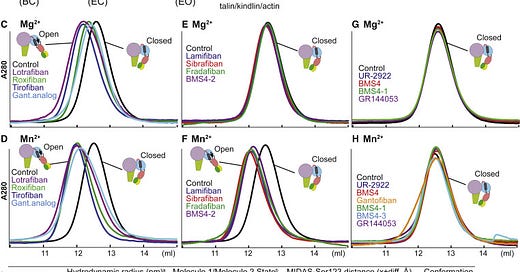A general chemical principle for creating closure-stabilizing integrin inhibitors
Inventors & their inventions
Axial: https://linktr.ee/axialxyz
Axial partners with great founders and inventors. We invest in early-stage life sciences companies such as Appia Bio, Seranova Bio, Delix Therapeutics, Simcha Therapeutics, among others often when they are no more than an idea. We are fanatical about helping the rare inventor who is compelled to build their own enduring business. If you or someone you know has a great idea or company in life sciences, Axial would be excited to get to know you and possibly invest in your vision and company. We are excited to be in business with you — email us at info@axialvc.com
The paper establishes a chemical principle for designing integrin inhibitors that stabilize the inactive, closed conformation rather than the active, open conformation.
Integrins are proteins involved in cell adhesion and signaling. Many integrins exist in equilibrium between inactive closed and active open conformations. Small molecule integrin inhibitors can shift this equilibrium. Some stabilize the open state and are termed "opening" inhibitors. Others stabilize the closed state and are "closing" inhibitors.
The authors studied integrin αIIbβ3 inhibitors. Opening inhibitors like tirofiban and lotrafiban induced opening of the αIIbβ3 headpiece fragment. In contrast, they found closing inhibitors like UR-2922 and BMS4 did not cause opening but bound with water molecules that are displaced during opening.
A key chemical feature of closing inhibitors was a nitrogen atom that hydrogen bonds to these waters. Modifying closing compounds to remove this nitrogen converted them to opening inhibitors. This closing principle discovered with αIIbβ3 could be transferred to the distantly related α4β1 integrin to identify new closing inhibitors.
Closing inhibitors may lack the partial agonism and harmful effects seen during long-term use of some opening inhibitors in clinical trials. The closing inhibitor principle may enable improved integrin antagonists. In summary, the key discovery is a simple chemical feature of nitrogen atoms that enables design of inhibitors that stabilize the inactive integrin state by harnessing water molecules important in activation. This closing inhibitor principle may be generalizable across the integrin family.




